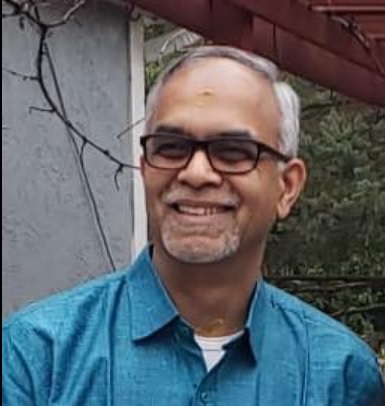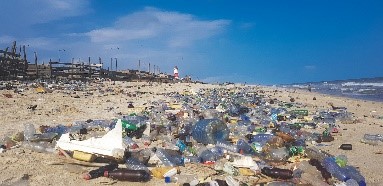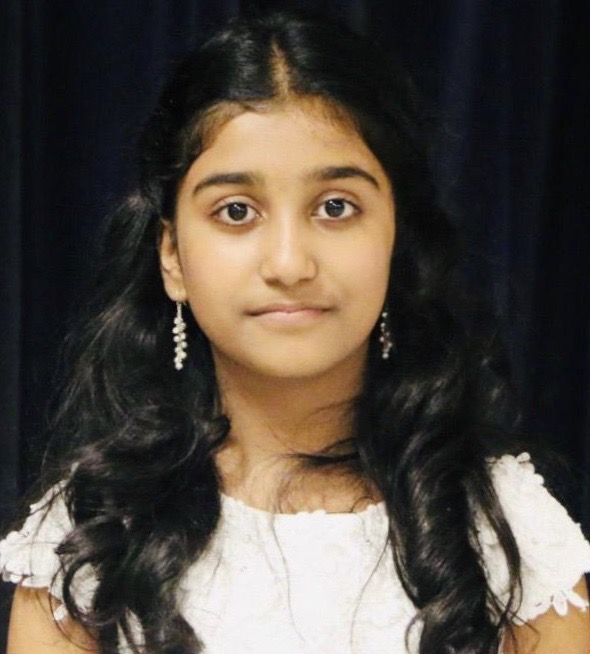When somebody mentions April, what is the first thing that pops into your mind?
You would probably think, “Oh no! April Fool’s Day is coming up!”. But there is a special day dedicated to preserve and protect our Earth which comes on April 22nd every year, and it is called “Earth Day”. This year’s Earth Day is really special, not only because we’re celebrating it while we are practising social distancing but also since it is the 50th Earth Day. The first Earth Day was celebrated on April 22, 1970, which marked the start of the modern environmental movement. This Earth Day we are already taking care of the Earth by staying at home! By staying home, we are helping to reduce carbon emissions. While April 22nd is specifically set aside to remind us to protect our planet, we must help Mother Earth every day.
Because of this lockdown, we have to stay at home for a long time. This could lead to stress, anxiety, and other health issues. Reading is one of the simple remedies to manage stress. It boosts cognitive skills, improves memory and focus, reduces stress and helps you gain knowledge. April 23rd was ‘World Book Day’, so COMA challenges you to read at least 20 minutes every day!
“The more that you read, the more things you will know. The more that you learn, the more places you’ll go.” – Dr. Seuss

As you know, we are in the middle of a pandemic. But even in the darkness, light can be found. During these times that light is people donating food, money and other essential things. A BIG thank you, to all the benevolent people who donated and supported COMA’s COVID-19 relief fund. Because of you, our community was able to donate $4,500 to Mid Ohio Food Bank, LifeCare Alliance, and YWCA Columbus. We couldn’t achieve it without you, thank you so much for your contributions and assistance.
പ്ലാസ്റ്റിക്കും പാരിസ്ഥിതിക പ്രശ്നങ്ങളും
– Valsan Palika

പ്ലാസ്റ്റിക് നമ്മുടെ ആവാസ വ്യസ്ഥക്കുണ്ടാക്കുന്ന പ്രത്യാഘാതത്തെപ്പറ്റി നമ്മെളെല്ലാവരും വളരെ ബോധവാന്മാരണ്. മാത്രമല്ല, നമ്മളാലാവും വിധം ആത്മാർത്ഥമായി ഈ വിപത്തിനെ നേരിടാൻ റീസൈക്ലിങും മറ്റും നാം വളരെ കാര്യക്ഷമമായി ചെയ്യുന്നുമുണ്ട്. നമ്മുടെ അസോസിയേഷന്റെ ‘യൂത്ത് വിങ്’ന്റെ ഈ വർഷത്തെ ഒരു പ്രധാന ഉദ്യമവും ഒരു ‘റിക്ലയ്സിങ് ക്യാമ്പയിൻ’ ആണ്. എന്താണ് പ്ലാസ്റ്റിക്കിന്റെ ലൈഫ് സൈക്കിൾ? പ്ലാസ്റ്റിക് ഏതൊക്കവിധത്തിൽ നമ്മുടെ ജീവിതത്തിലേക്ക് കടന്നുകയറിയിട്ടുണ്ട്? റീസൈക്ലിങ് അഥവാ പുനരുപയോഗം എത്രമാത്രം ഫലവത്താണ്? നമുക്കൊന്ന് പരിശോധിക്കാം.

‘മൃദുവായതും എളുപ്പത്തിൽ രൂപപ്പെടുത്താൻ കഴിയുന്നതും’ എന്നാണ് പ്ലാസ്റ്റിക് എന്ന വാക്കിന്റെ അർഥം. രസതന്ത്രത്തിൽ പ്ലാസ്റ്റിക്കുകൾ ‘പോളിമർ’ വിഭാഗത്തിൽപ്പെടുന്നു. പെട്രോളിയം സംസ്കരണത്തിന്റെ ഉപോല്പന്നങ്ങളിൽനിന്നുണ്ടാക്കുന്ന ‘സിന്തെറ്റിക് പോളിമർ’ ആണ് ഇപ്പോഴത്തെ പ്ലാസ്റ്റിക്കിന്റെ അടിസ്ഥാന ഘടകം. ഈ പോളിമർ തന്മാത്രകൾ കാർബൺ ആറ്റങ്ങളുടെ നീണ്ട ചങ്ങലകളാണ്, പ്രകൃതിദത്തമായ പോളിമറുകളെക്കാൾ വളരെ നീണ്ടത്. അതാണ് പ്ലാസ്റ്റിക്കിന് ശക്തിയും ഭാരക്കുറവും വഴക്കവും നൽകുന്നത്. ഇതേ സ്വഭാവം തന്നെയാണ് പ്ലാസ്റ്റിക്കിന്റെ വിഘടനത്തിനുള്ള പ്രധാന തടസവും!
കഴിഞ്ഞ ഒരു നൂറ്റാണ്ടിനിടയിലാണ് പ്ലാസ്റ്റിക്കിന്റെ ഉപയോഗം വളരെയധികം വർധിച്ചത്. പ്രധാനയും അഞ്ച് തരത്തിലുള്ള പ്ലാസ്റ്റിക്കുകളാണ് ഇപ്പോൾ ഉപയോഗത്തിലുള്ളത്.
PET (Polyethylene Terephthalate): പ്ലാസ്റ്റിക് കുപ്പികൾ – പാനീയങ്ങളും പാചക എണ്ണകളും നിറച്ചു വരുന്ന പാക്കറ്റുകൾ.
HDPE (High Density Polyethylene): ഉയർന്ന താപനിലയും രാസ പദാർത്ഥങ്ങളും ചെറുത്തു നിൽക്കാൻ കഴിവുള്ളത്. ഹെൽമെറ്റ്, പെട്രോൾ ടാങ്കുകൾ, കുപ്പിയുടെയും മറ്റും മൂടികൾ, മരത്തിനു സമാനമായ ഫ്ളോറിങ് പലകകൾ മുതലായവ
PVC (Polyvinyl Chloride): ഉത്പാദന ചെലവ് കുറവ്, അതിനാൽത്തന്നെ ധാരാളം നിത്യോപയോഗ സാധനങ്ങളുടെ നിർമാണ ഘടകം
LDPE (Low Density Polyethylene): 100 ഡിഗ്രിവരെ ചൂട് താങ്ങാൻ കഴുവുള്ള പ്ലാസ്റ്റിക്. പ്ലേറ്റുകളും, ട്രെയ്കളും, കമ്പ്യൂട്ടർ ബോർഡുകൾ, കളിപ്പാട്ടങ്ങൾ മുതാലാവയും.
PP (Polypropylene): കപ്പുകൾ, കുപ്പികൾ, പാത്രങ്ങൾ, വീട്ടുപകരണങ്ങൾ, ഓട്ടോമോട്ടീവ് ബാറ്ററികൾ
പ്ലാസ്റ്റിക്കില്ലാത്ത ഒരു ചുറ്റുപാട് ചിന്തിക്കാൻ വളരെ പ്രയാസമാണ്. നമ്മൾ ഉപയോഗിക്കുന്ന മിക്കവാറും വസ്തുക്കളും പ്ലാസ്റ്റിക് ചേർന്നവയോ പ്ലാസ്റ്റിക് പത്രങ്ങളിലോ പൈപ്പുകളിലോ ബാഗുകളിലോ വരുന്നവയോ ആണ്. (നിങ്ങളുടെ ചുറ്റും ഒന്ന് കണ്ണോടിച്ചാൽ അറിയാം പ്ലാസ്റ്റിക്കിന്റെ അതിപ്രസരം). അതിനാൽ പ്ലാസ്റ്റിക് മുക്തമായ ഒരു ജീവിതം പ്രായോഗികമല്ല. പ്ലാസ്റ്റിക്കിന്റെ കുഴപ്പങ്ങൾ മനസ്സിലാക്കുകയും അതിൽനിന്ന് മോചനം നേടാനുള്ള മാർഗങ്ങൾ അറിഞ്ഞിരിക്കുകയുമാണ് അഭികാമ്യം.
എന്തൊക്കെയാണ് മനുഷ്യനും പരിസ്ഥിതിക്കും ഇതുകൊണ്ടുള്ള പ്രശ്നങ്ങൾ?
മുൻപ് പറഞ്ഞതുപോലെ, ഇപ്പോൾ പ്ലാസ്റ്റിക് ഉണ്ടാക്കുന്നത് പ്രധാനമായും പെട്രോളിയത്തിൽനിന്നുമാണ്. (അത്യാവശ്യം പ്രകൃതി വാതകത്തിൽനിന്നും). പ്രകൃതിവിഭവങ്ങളുടെ ചൂഷണത്തിന് പുറമെ, പ്ലാസ്റ്റിക് നിർമാണത്തിൽ പുറംതള്ളുന്ന അപകടകാരികളായ രാസ വസ്തുക്കൾ നമ്മുടെ വായു, വെള്ളം, ഭൂമി മുതലായവയെ അനിയന്ത്രിതമായി മലീമസമാക്കുന്നു. ഇത് ആവാസവ്യവസ്ഥയെത്തന്നെ അപകടത്തിലാക്കുന്നു.
പ്ലാസ്റ്റിക് നിർമാണത്തിൽ പല രാസവസ്തുക്കളും ചേർക്കുന്നുണ്ട്. അതിൽ നമുക്ക് പൊതുവെ പരിചയമുള്ളത് ‘BPA’ (Bisphenol A) ആണ്. ‘BPA Free’ എന്ന് പ്ലാസ്റ്റിക്ക് ബോട്ടിലുകളിലും മറ്റും നിങ്ങൾ കണ്ടിട്ടുണ്ടാവും. BPA ക്യാന്സറിനും മറ്റു ജനിതക രോഗങ്ങൾക്കും നിദാനമാകാമെന്ന് പല ഗവേഷകരും നിരീക്ഷിച്ചിട്ടുണ്ട്.
ഉപയോഗശേഷം വലിച്ചെറിയുന്ന പ്ലാസ്റ്റിക്ക് മാലിന്യമാണ് മറ്റൊരു വലിയ പ്രശ്നം. ഇവ വിഘടിച്ചു മണ്ണിൽ അലിഞ്ഞുചേരാൻ ആയിരക്കണക്കിന് വർഷങ്ങൾ വേണ്ടിവരും. വിഘടന പ്രക്രിയയിൽ ഇവയിൽനിന്നുണ്ടാവുന്ന ‘മൈക്രോ’ പ്ലാസ്റ്റിക്കുകൾ (<5 mm) വായു, വെള്ളം ഇവയിൽക്കൂടി മനുഷ്യനിലും മറ്റു ജീവികളിലും എത്തി പലതരം രോഗങ്ങൾക്കും കാരണമാകുന്നു. പലവിധ വസ്ത്രങ്ങളും പ്ലാസ്റ്റിക് ഉത്പന്നങ്ങൾ ചേർന്നതാണ്. ഈ വസ്ത്രങ്ങൾ കഴുകുമ്പോഴെല്ലാം ദശലക്ഷക്കണക്കിന് പ്ലാസ്റ്റിക് മൈക്രോ ഫൈബറുകൾ നമ്മുടെ വാഷിംഗ് മെഷീനുകളിൽ നിന്നും മലിനജല ശുദ്ധീകരണ പ്ലാന്റുകളിലൂടെ കടലിലേക്ക് നേരിട്ട് പോകുന്നു. കടൽ മലിനീകരണത്തിന്റെ ഒരു പ്രധാന കാരണം മൈക്രോ പ്ലാസ്റ്റിക്കാണ്. സമുദ്രജീവികൾ ഈ വിഷ നാരുകൾ ഭക്ഷിക്കുകയും അവ ഭക്ഷ്യ ശൃംഖലയിലേക്ക് കടന്നുവരികയും ചെയ്യുന്നു. നമ്മുടെ മൽസ്യ സമ്പത്തിനെ ബാധിച്ചിട്ടുള്ള ഒരു വലിയ വിപത്താണ് കടലിലെ പ്ലാസ്റ്റിക് മാലിന്യം. കൊക്കക്കോള, നെസ്ലെ, പെപ്സികോ – ഈ മൂന്ന് വ്യവസായ ഭീമന്മാരാണ് പ്ലാസ്റ്റിക് മാലിന്യത്തിന്റെ പ്രധാന കാരണക്കാർ *. അതിന്റെ പൂർണ ഉത്തരവാദിത്തം ഏറ്റെടുക്കുന്നതിന് പകരം ‘റീസൈക്ലിങ്’ ഉപഭോക്താവിന്റെ ഉത്തരവാദമായി അടിച്ചേല്പിക്കാനാണ് ഈ മൂന്ന് കമ്പനികളും പ്ലാസ്റ്റിക് മാലിന്യങ്ങൾക്ക് കാരണക്കാരായ മറ്റ് കമ്പനികളും ശ്രമിച്ചുകൊണ്ടിരിക്കുന്നത്. അതാണ് നാം ഇന്ന് കാണുന്ന ‘റീസൈക്ലിങ്’ന്റെ തുടക്കം. നാം റീസൈക്കിൾ ചെയ്യുന്ന പ്ലാസ്റ്റിക്കും മറ്റു വസ്തുക്കളും എവിടെചെന്ന്ചേരുന്നുവെന്ന് നിങ്ങൾ ചിന്തിച്ചിട്ടുണ്ടോ?

റീസൈക്ലിങിനായി നമ്മൾ നിക്ഷേപിക്കുന്ന പല സാധനങ്ങളും നമ്മുടെ രാജ്യത്തുതന്നെയുള്ള ചെറുതും വലുതുമാണ പല വ്യവസായങ്ങളും സംസ്കരിക്കുകയും മറ്റു പല നിത്യോപയോഗ വസ്തുക്കളാക്കി മാറ്റുകയും ചെയ്യുന്നു. എന്നാൽ വലിയൊരു ശതമാനം ചൈനയിലേക്കു കയറ്റി അയക്കപ്പെടുന്നു. ചൈനയിലെ മെഗാ ഡ്രാഗൺ ഫാക്ടറികൾക്ക് വിശപ്പടക്കാൻ ഇത്തരം ഇറക്കുമതി കൂടിയേ തീരു. ലോകമെമ്പാടുമുള്ള ദരിദ്ര രാജ്യങ്ങളിലേക്ക് പ്രതിവർഷം ലക്ഷക്കണക്കിന് ടൺ യുഎസ് പ്ലാസ്റ്റിക് മാലിന്യങ്ങൾ കയറ്റി അയയ്ക്കുന്നു. ഇത് അതാത് രാജ്യങ്ങളിൽ പൊതുജനാരോഗ്യത്തിനും പരിസ്ഥിതിക്കും ഉണ്ടാകുന്ന പ്രത്യാഘാതങ്ങൾ ഭയാനകമാണ്.
പ്ലാസ്റ്റിക്കിന്റെ അതിപ്രസരം കുറക്കാൻ എന്താണൊരു പോംവഴി? റീസൈക്ലിങ് ഒരു പരിധിവരെ സഹായിക്കും. അതിനേക്കാൾ എത്രയോ നല്ലതാണ് പ്ലാസ്റ്റിക്കിന്റെ ഉപയോഗം കുറക്കുന്നത്. അതിനാവട്ടെ നമ്മുടെ പരിശ്രമം. ഒറ്റപ്രാവശ്യം ഉപയോഗിച്ച് വലിച്ചെറിയുന്ന പ്ലാസ്റ്റിക് പ്ലേറ്റുകളും മറ്റും ഒഴിവാക്കുക. കടയിൽ നിന്ന് കിട്ടുന്ന പ്ലാസ്റ്റിക് സഞ്ചികൾ കുറക്കാൻ ഇപ്പോഴും കയ്യിൽ ബാഗ് കരുതുക. പ്ലാസ്റ്റിക് നിർമിത വസ്തുക്കൾ കഴിവതും ഒഴിവാക്കുക.
പറയാൻ എത്ര എളുപ്പം! ഞാൻ ഈ ടൈപ്പ് ചെയ്യുന്ന കീ ബോർഡും, കാണുന്ന മോണിറ്ററും കമ്പ്യൂട്ടറും ഫോണും എന്നുവേണ്ടാ, കണ്ണടയും, ചീപ്പും, ചെരുപ്പും എല്ലാം എല്ലാം പ്ലാസ്റ്റിക് മയം! ഇതൊന്നുമില്ലാത്ത ഒരു ജീവിതം ചിന്തിക്കാനേ വയ്യ! എങ്കിലും പ്ലാസ്റ്റിക്കുണ്ടാക്കുന്ന പ്രശ്നങ്ങൾ അറിഞ്ഞിരുന്നാൽ ഒരുപക്ഷേ, അടുത്ത തവണ നൂറു പ്ലാസ്റ്റിക് പ്ലേറ്റുകൾ വാങ്ങുന്നതിന് പകരം ‘IKEA’യിലും മറ്റും കിട്ടുന്ന പ്ലേറ്റുകൾ നിങ്ങൾ വാങ്ങിയേക്കാം!
അതൊരു പ്ലാസ്റ്റിക് മുക്ത വിപ്ലവത്തിന്റെ തുടക്കമാവട്ടെ! നമ്മുടെ വരും തലമുറക്കുവേണ്ടി നമുക്ക് ചെയ്യാൻ പറ്റുന്ന ഏറ്റവും വലിയ ഉപകാരമായിരിക്കും അത്.
വീണ്ടും ഒരു പ്രഭാതം
– Hari Narayanaswamy

ദു:ഖം മാത്രമാണുളളിൽ ക്രൂരയാം ഘോരമാരി നിഷ്ഠൂരം വേട്ട തുടരവേ സ്വച്ഛ ജീവിതങ്ങളെ കടപുഴക്കിയെറിയവേ സ്വപ്നങ്ങളെ ഹ്ലാദം ചുട്ടുകരിക്കവേ
മരണമോടിയെത്തും മുമ്പേ മരിക്കുന്നു വിട ചൊല്ലാനാകാതെ കാതരം ഹൃദയങ്ങൾ. മുഖംമൂടിയിലൊളിക്കുന്നു വിളറിയ മുഖങ്ങൾ കൈയ്യുറക്കുള്ളിൽ വിറയ്ക്കുന്നു വിരലുകൾ
ശവമെടുക്കാൻപോലും ഭയക്കുന്നു മക്കൾ. പരസ്പരം കാണാതെ അകലുന്ന കൂട്ടുകാർ തമ്മിലകലം കല്പിപ്പത് ഉള്ളിലോ പുറത്തോ? നമുക്കു ജീവിപ്പതിന്നായിന്നു മരിക്കേണമോ മനുഷ്യത്വം?
കരളലിയും ദുരന്തങ്ങൾ നിശ്ശബ്ദം വീണുടയവേ ഉള്ളിൽ, അകത്തളങ്ങളിൽ കരിനിഴലുകൾ പരന്നീടവേ തേങ്ങലോടുയരുന്നിതെങ്ങോ നോവിന്റെ ഗസലുകൾ കൂട്ടിന്നീണം പകരുവാൻ രാക്കിളി, നീയും മറന്നുവോ?
മേടപ്പുലരിയിൽ വിഷു കൊന്നയും കണിയുമായെത്തവേ ആശതൻ കെടാവിളക്കിൽ വീണ്ടുമൊരു തിരികൊളുത്തവേ ദു:സ്വപ്നമെന്നപോൽ മറയുമോ ദു:ഖം, വീണ്ടുമുണരുമോ പ്രഭാതം?
Listen to this poem being recited by Prahlad Trivikraman.
Recipe Corner
Veggie Biriyani with Paneer
– Pradip Ramachandran

Serves: 6-8
Prep time: 15 minutes
Cooking time: 20 minutes
Oven time: 20 minutes.
I made this for dinner when I had some friends over a couple of weeks ago. Actually nothing too fancy. Just added fried Paneer to a simple vegetable biriyani and most people liked the result !
Biriyani isn’t a 5 minute dish to prepare. So embark on this only when you are cooking leisurely and have some time (approx 40-50 minutes) on your busy schedule😁
As always, read the recipe BEFORE you start chopping and slicing and cooking. That way you get your road-map for the dish in your head to get you to your goal. Don’t hesitate to make adjustments as needed. What is the fun in cooking if you simply follow someone else’s recipe (except for the ratio of rice to water)?
Ingredients:
- 3 tablespoons oil or ghee (clarified butter)
- 1 onion thinly sliced
- 1 tblspn minced garlic
- tblspn minced ginger
- 1 ripe tomato diced
- 1/2-3/4 cup warm water (use as needed)
- 1/2 cup green peas
- carrot sliced into one inch pieces (thickness of french fries)
- 1 green bell pepper diced
- 1 cup cauliflower florets
- Salt to taste
- Dry spices (you can also use a store bought Biriyani mix like Eastern or any other brand)
- 1/4 tspn turmeric powder
- 1/4 tspn cayenne pepper
- 1/2 tspn ground black pepper
- 2 tspns Garam masala
- 1 tspn coriander powder
- 1/2 tspn Fennel powder (optional)
- 1 cup fried Paneer (fresh cheese)
- 3 tblspns chopped mint
- 4 tblspns chopped cilantro
Method:
- Add ghee or oil in a pan over medium-high heat.
- Add the onion, and cook until translucent, about 3-4 minutes.
- Stir in garlic, ginger, tomatoes, and saute for 4-5 minutes, cook covered on low-med heat until most of the moisture has evaporated (6-8 minutes). Peek once in a while to ensure that the stuff isn’t burning. If too dry, sprinkle a little warm water.
- Add vegetables, spice powders and salt. Stir well, add 1/2 cup warm water and cook covered on medium heat until vegetables are tender (not over cooked).
- Add Paneer cubes, mint and cilantro. Stir well.
While the veggies are cooking, prepare the rice as follows.
For rice
- 2 cups washed and drained Basmati rice
- 3 tblspn Ghee or oil
- 1/2 tspn cumin seeds
- 1/2 tspn Shah Jeera (optional)
- 5-6 Cardamom pods
- 1 inch piece of Cinnamon stick
- 4-5 whole Cloves
- 2 bay-leaves
- 2 hot green chili peppers slit lengthwise (optional, for flavor)
- 3.5 cups of warm water
- Salt to taste
Method:
- Warm the Ghee or oil in a fairly deep pot warm on medium heat.
- Add all the whole spices and saute for a couple of minutes. Add 3.5 cups of warm water and sufficient salt. Bring to a rolling boil.
- Then add drained rice and green chili pepper. Stir occasionally until water comes back to a boil. Cook uncovered for 5-6 minutes until most of the water has evaporated. Then reduce heat to the lowest setting and cook COVERED for 15-18 minutes. Remove lid and gently fluff the rice using a fork.
Layering:
- 3 tblspns chopped mint (garnish)
- 3 tblspns chopped cilantro (garnish)
- 1 tspn Rose essence diluted in 2 tblspns of water or rose water
- 1/2 cup fried onions
- A pinch of saffron soaked in 3 tablespoons of warm milk (optional)
Method:
- Reserve half the fried onions, cilantro and mint for garnish.
- In a flat serving dish, place alternate layers of the veggie+paneer mix, remaining cilantro, mint, fried onions and cooked rice. You should have at least two layers.
- Sprinkle rose water over rice
- Garnish with fried onions, cilantro and mint. Sprinkle saffron milk on top.
- Cover dish with a tight-fitting lid and place in 300F over for 20 minutes.
- Remove, and serve hot with Raitha.
- Note: Let your guests do the “mixing” of the biriyani. You don’t want to spoil the look of it, do you?
Youth Corner
Save the Earth
– Avnita Pramod
6th Grade, Hyatts Middle School, Powell

Earth Day is an annual event celebrated around the world. In fact, it marks its 50th anniversary on April 22, 2020. Earth Day celebrates the environmental movement and raises awareness about pollution and ways to maintain a clean habitat.

Many sixth graders like me want to make a difference in the world. One time, as we were driving to the grocery store, I saw a lake. That lake had so much plastic and trash in the water. I wondered why anyone would want to throw plastic or trash in the waters when we had recycling bins and trash cans. I went home and wanted to do some research about this. It turns out 14 billion pounds of garbage was being dumped in the ocean each year. That is more than 1.5 million per hour. Some people ask why is it bad to throw trash in the ocean? Nature.com states, “When plastic finally breaks down, it causes trillions of plastic particles to float around in the ocean. This causes pollution in the oceans and has harmful effects on sea life.” This quote shows how bad trash in oceans can be. When fish eat plankton, they are ingesting the very small plastic particles in the ocean. This kills the fish and their ecosystem. Some ask, can’t we scoop it all out of the sea? Well, it is a nice idea but sadly impossible. Only 1% of litter floats and the rest sinks down to the ocean bottom.
What does putting plastic in oceans and land do to us? Plastic releases chemicals in the surrounding soil and air. When this plastic pollutes the air, it makes it harder for humans to breathe. Also, if the soil is polluted, plants will wither down and die. It can take hundreds or even thousands of years for plastic to break down, so the environmental damage is long-lasting.

Kids like you and I want to help the earth in any way we can. There are many strategies that can help mother earth and its habitat. We can reduce using plastic by using reusable water bottles instead of bottled water, taking reusable bags instead of using plastic bags, avoiding straws, plastic cups etc. We can also recycle plastic instead of putting them in trash cans, avoid products that contain microplastics and even support your neighborhood cleanups. These are some of the small changes that we can make to our daily lifestyle which will create a big difference. Spread the word and encourage others to do these simple things and the world will be a better place for all of us to live.
Save Earth – Poster
– Ameya Pramod
4th Grade, Liberty Tree Elementary School, Powell


Save the Earth – Painting
– Aanjali Freney
4th Grade, New Albany Plain Local School


Save the Earth – Drawings
– Neil Nair
7th grade, Willard Grizzell Middle School, Dublin


– Abitha Vinoyi
12th grade , Olentangy Orange High School


Kids Corner
Save my Earth
– Tanvi Rajesh 3 years old
Made this craft with home-made dough.


Meals on Wheels Volunteers
April 12, 2020: Subin Thomas, Simple Subin, Kevin Subin and Trisha Subin
Completed Route # V1600
April 26, 2020 : Nish Nishant,Deepa Jayabalan and Jayabalan
Completed Route# V1801
Obituaries
Let us take a moment to remember all those who have lost their lives due to COVID-19.
Special Thanks to all COVID-19 frontline fighters
You are walking right into the fire to help us get through this difficult time and making this world a better place.
Thank you so much for all your hard work and support to face this adversity.

Hi,
One of the positive fallouts of the pandemic is our realization that much of our work can be done online without commuting long distances. We had been unable to enroll our kids in yhe Malayalam classes due to the distance and time involved. I was wondering if you can do another session of the Malayalam class that is online and we can meet with the teachers using any video conferencing software. And since all of us will be around due to travel restrictions every where, may be we can consider a summer session? I hope you will consider this. Thanks.
Hi Gayathri,
Thank you for your reply.
Could you please share your email id or write to coma.officials@gmail.com.
Thanks.
Priya.